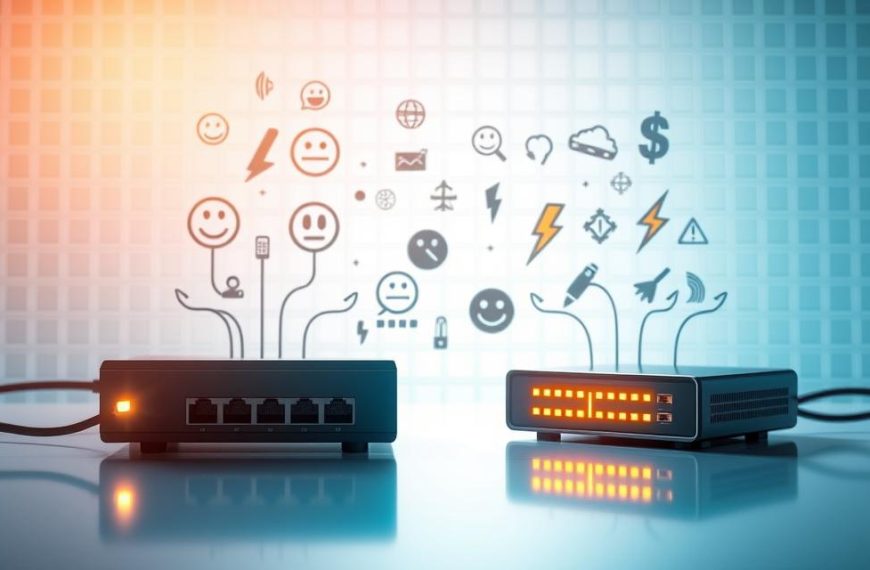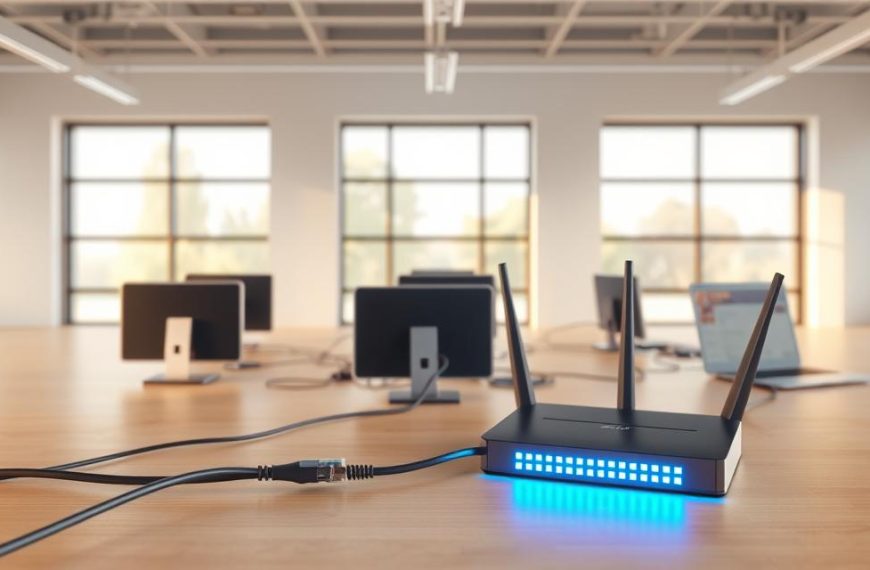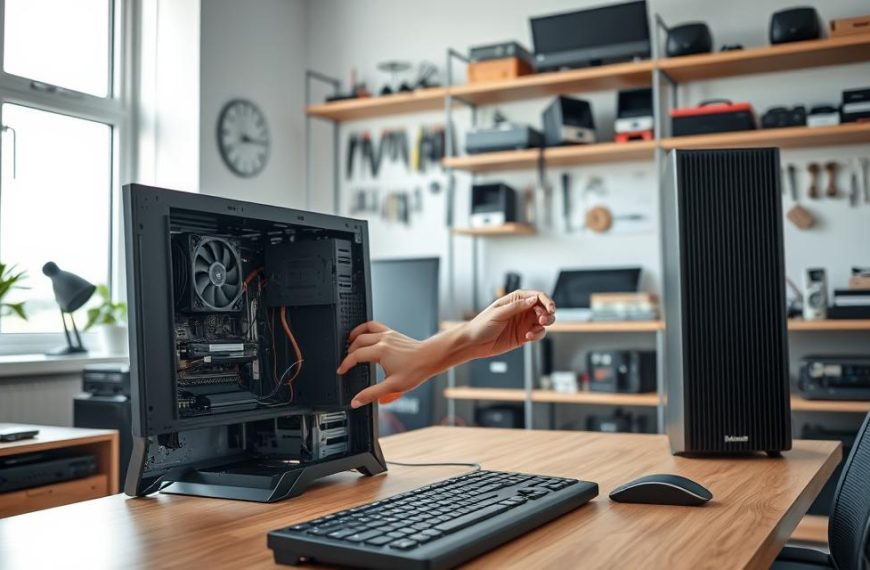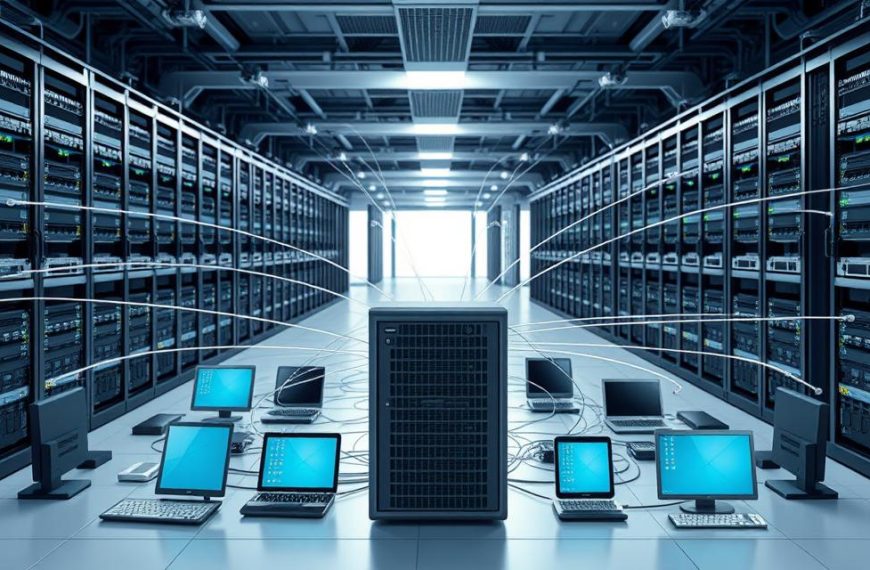At the heart of every digital conversation lies a fundamental concept: the host definition. These entities serve as the active participants in network communications. They enable the seamless exchange of information across connected systems.
A host represents any device equipped with an IP address. This allows for data transmission and reception. This includes traditional computers, servers, and modern smartphones. Each functions as an intelligent endpoint, not just passing information along.
These network devices utilise unique network identifiers to establish their digital presence. The assignment of an IP address transforms hardware into communicative partners within the infrastructure.
Understanding this distinction between active hosts and passive nodes is key. It provides insight into modern networking architecture. It forms the foundation for exploring how data travels and services operate across connected environments.
Defining Hosts in Computer Networks
The term “host” might seem simple in networking, but it’s actually quite complex. It affects how networks are set up and how data moves. Knowing the difference between hosts and other network parts is key to understanding data flow in today’s networks.
The Basic Concept of a Host
A host is a network endpoint with a unique network address, like an IP address. This makes it more than just a device; it can send and receive data.
Every TCP/IP host can act as a client or server. This makes them different from simple connection points. Whether it’s a computer or a cloud server, they’re all about exchanging data.
Devices like smartphones and IoT units can also be hosts. They need unique addresses to join in network talks.
Hosts vs. Nodes: Clarifying Terminology
Many get confused between hosts and nodes. But knowing the difference is key for good network design. Hosts are a type of node, but not all nodes are hosts.
Nodes are all devices on a network, including routers and switches. They help data move but don’t create or use data themselves. They work at lower network layers, focusing on forwarding packets.
Hosts, on the other hand, need IP addresses to be network endpoints. An internet host is a device reachable on the global internet. But the term also fits devices on private networks. This means hosts work at the network layer and above, dealing with applications and services.
Here’s an example: a switch connecting computers is a node. But each computer is both a node and a host. The switch forwards data without its own address, while computers handle data and run apps.
“A node is a broader term that includes anything connected to a network, while a host requires an IP address.”
Knowing the difference helps network admins design and fix networks better. It’s about knowing which devices need IP addresses (hosts) and which should just forward traffic (nodes). This leads to better, safer networks.
Types of Host Devices in Networks
Network hosts are different types, each with its own role in digital worlds. Knowing about these helps us see how devices work together in networks.
End-User Devices: Computers and Smartphones
Client hosts are what most people use every day. They ask for things and use network resources. Examples include laptops, desktops, tablets, and smartphones.
These devices are easy to use and have apps. They mainly use network services, not provide them. Their features change based on what people need.
Today, these devices can connect in many ways:
- Wi-Fi and Ethernet
- Bluetooth for gadgets
- Cellular data in mobiles
More devices mean more network activity. They are key for accessing digital services.
Servers: Dedicated Hosts for Services
Server hosts give out resources in networks. They work all the time and are always ready. They are the core of today’s digital world.
Dedicated servers focus on certain tasks:
- Web servers for websites and apps
- File servers for shared storage
- Database servers for data
- Application servers for business logic
These systems have better hardware. They have extra power, memory, and storage. They are built to be reliable and strong, not portable.
Big companies use server clusters for important tasks. This keeps services running all the time. It lets many devices use the service at once.
Cloud computing has made servers better. It uses virtualisation to share resources. This has changed how companies manage their servers.
Identifiers for Hosts: IP Addresses and MAC Addresses
Modern networking relies on two key systems for host communication. These systems help data reach its right place, no matter the distance. They work together to make sure data gets to where it needs to go.
IP Addresses: Logical Identifiers
An IP address is a logical address given to a host’s network interface. It’s vital for sending data across networks, including the internet.
Network admins can set these addresses manually or use DHCP for automatic setup. This makes IP addressing flexible for all network sizes.
Each host has a unique host identification number. This number, combined with a network identity, forms the host’s IP address. This system helps data move efficiently between networks.
IPv4 and IPv6 Formats
The IPv4 address has been key for decades. It’s a 32-bit address, shown as four decimal numbers with dots (e.g., 192.168.1.1). But, IPv4’s address limit led to the creation of IPv6.
The IPv6 address is a 128-bit hexadecimal system. It offers almost unlimited addresses, shown as eight groups of four hexadecimal digits with colons (e.g., 2001:0db8:85a3::8a2e:0370:7334). IPv6 also brings better security than IPv4.
MAC Addresses: Physical Identifiers
IP addresses handle logical routing, but MAC addresses identify devices physically. Each NIC has a unique MAC address, set during manufacturing.
MAC addresses work at the data link layer. They help identify devices in local networks but aren’t for long-distance routing.
IP and MAC addresses work together for host identification. For more on this, check out our guide on networking basics and address functionality.
The mix of IP and MAC addressing ensures data reaches the right device. This system is essential for all modern network communication.
The Role of Hosts in Network Communication
Hosts are key players in network communication. They turn digital info into meaningful exchanges. Their role goes beyond just connecting systems, enabling complex data transfer and teamwork.
Data Transmission and Reception
Network hosts use advanced protocols for efficient data transfer. The Transmission Control Protocol (TCP) ensures data is delivered correctly by setting up connections and checking packet receipt. It’s perfect for tasks needing precision, like browsing the web and sending emails.
The User Datagram Protocol (UDP) focuses on speed, not reliability. It sends data without setting up a connection. This makes it great for fast applications like video streaming and online games, where a little packet loss is okay.
The data transmission process has several steps:
- Data is broken into smaller packets
- Packets are labelled with destination IP and MAC addresses
- Packets are routed through the network
- Packets are reassembled at the receiving host
Receiving hosts watch for packets meant for them. When they find one, they check it, put it back together, and send it to the right app. This completes the communication loop.
Hosts in Client-Server and Peer-to-Peer Models
Network architecture shapes host roles. In the client-server model, there are clear roles. Server hosts offer services, while client devices ask for them.
This setup is common in web services:
- Web servers host websites
- Email servers manage messages
- Database servers handle queries
The peer-to-peer network is different. Here, hosts are equal. Each device shares resources directly, without a central point. This model is good for file-sharing and teamwork, making systems more reliable.
The peer-to-peer model excels in:
- Distributed content sharing
- Pooling resources across devices
- Being fault-tolerant with redundancy
Both models show how hosts adapt to different network needs. They support everything from big business systems to flexible team networks.
Conclusion
Hosts are the key parts of computer networks, playing a vital role in digital talks. Every device with an IP address that sends or gets data is a host. This makes it different from just network stuff.
There are two main types of hosts: client devices and servers. They use unique IDs to talk to each other. IP addresses tell where data is coming from, while MAC addresses show who it’s from.
Hosts make sure all network talks work smoothly. They start requests, offer services, and share info easily. Their role in keeping data flowing is huge.
For IT folks and network managers, knowing hosts is key. They make things like file sharing and cloud services work. Understanding hosts helps improve network speed and efficiency.
Hosts are vital in both company networks and the worldwide web. They help keep communication and sharing of resources steady. Proper setup and management of hosts are essential for this.

















